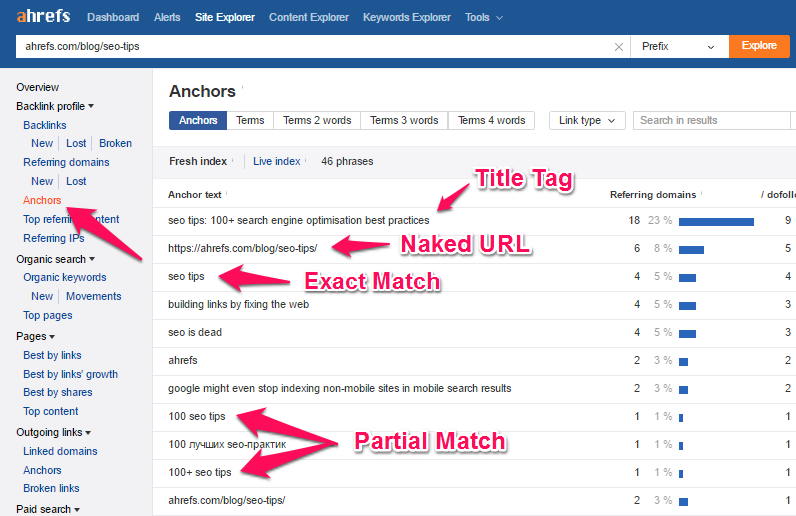SEO has changed a lot over the years.
But even though there's more emphasis on content and relevance now, links are still front and center when it comes to Google's algorithms.
Like it or not, link building isn't going anywhere anytime soon. Ranking without links is nearly impossible in the vast majority of niches, and if you want to rank, you need good links from relevant websites.
One aspect of link building that a lot of people mess up is anchor text. That's the text you click on to go to a link.
You almost never see a naked URL, there's text. Sometimes it's “click here,” sometimes it's something more specific and relevant.
In the old days, you could just kind of spam exact match anchor text in all of your links.
If you were trying to rank for “fast weight loss,” you'd want that exact text for all of your links. Naturally, Google caught on, and today, too much exact match anchor text is a red flag.
But what should you use for anchor text?
How often should you use an exact match, versus a related variant, versus something generic? This trips up a lot of people.
In a recent post at Quicksprout, marketing guru Neil Patel gives a great rundown of the different kinds of anchor text, and how you should use them.
The different types of anchor text
When you break it down, there are six main types of anchor text:
- Exact match – Like I already explained
- Partial match – This contains the keyword phrase you’re trying to rank for but isn’t exact
- Branded – The name of your brand
- Naked URLs – This is the URL exactly how it appears in your browser
- Generic (also known as junk anchors) – Some examples would be “check this out” or “click here”
- LSI – This is latent semantic indexing, which is variations of your keyword.
If this still seems a little vague, here are examples provided by Ahrefs:
[image source: Quick Sprout]
Speaking of Ahrefs… They performed some extensive research on anchor text fairly recently (mid-2016) to determine its impact on SEO.
There’s a ton of data, which can be a little confusing if you’re not an SEO nerd.
Allow me to give you the key takeaways.
First of all, anchor text continues to play an integral role in link-building, and SEO in general, and is unlikely to change any time soon.
Second, it’s completely true that you need to be careful when using keyword-rich anchor text.
Going overboard can definitely get you penalized.
However, this doesn’t mean you should never use keyword-rich anchor text.
It’s actually okay—as long as you don’t go crazy with it.
Ahrefs suggests “using exact match at around 2 percent and phrase match at around 30 percent.”
And that sounds about right to me.
The bottom line with anchor text is that it needs to be natural.
To achieve that natural effect, you want to use a variety of different formats.
This graph from Search Engine Journal offers their version of ideal anchor text diversity:
[image source: Quick Sprout]
It’s usually all right to throw in some keyword-rich anchor text, but you need to be smart about it.
If you follow this formula, you should be good to go, and you can construct hyperlinks—both internal and external—the right way.
For more insight, check out the article from Ahrefs I referenced above.
In my opinion, it’s one of the best currently out there on anchor text.
You can find out more about common link building mistakes over at Quick Sprout, including the surprising truth about links from web directories.
CHALLENGE Yourself to Profit!
Free Download: Build Your Profit-Generating Online Business With This Free Blueprint
Sign Up, follow the easy steps and You'll get the tactics, strategies & techniques needed to create your online profit stream. It's free!





